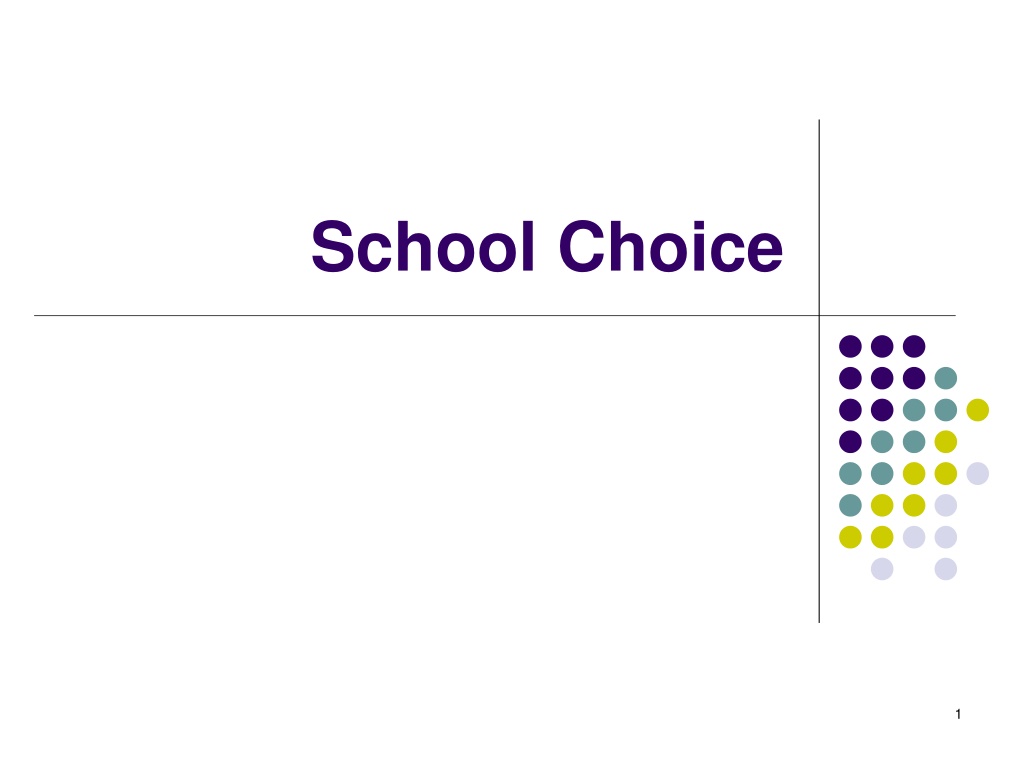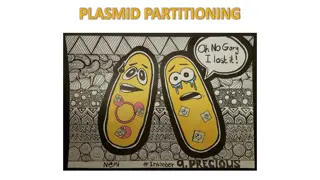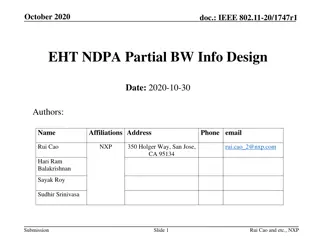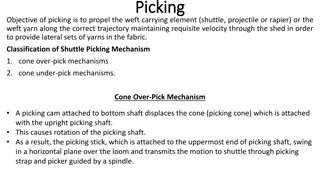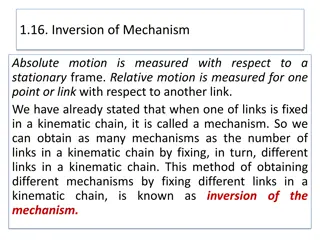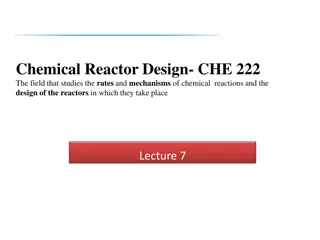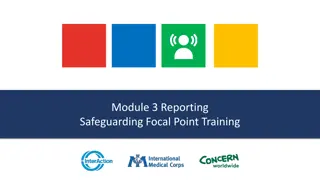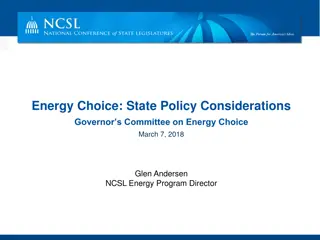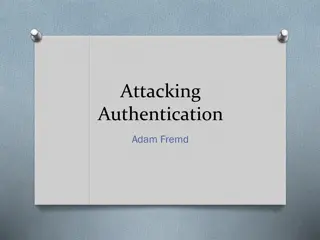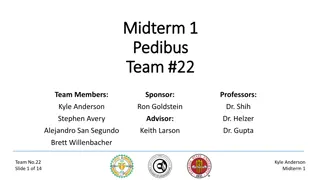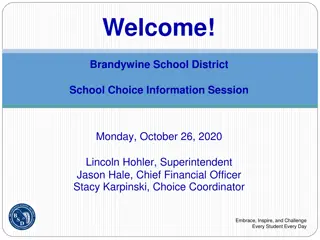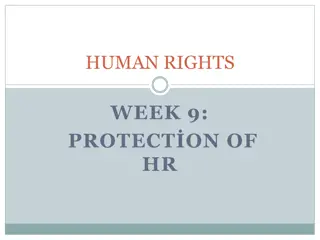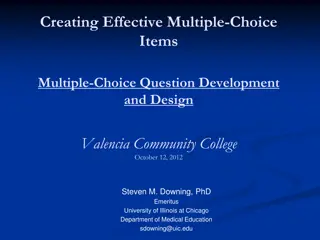Understanding School Choice Mechanisms and Design Considerations
Today's class delves into the application of matching theory in the context of school choice, highlighting the importance of efficient placements, fair outcomes, and user-friendly mechanisms. Explore the evolution of school choice programs, the debate around placement mechanisms, stability considerations, and the quest for improved models in the realm of education allocation.
Download Presentation

Please find below an Image/Link to download the presentation.
The content on the website is provided AS IS for your information and personal use only. It may not be sold, licensed, or shared on other websites without obtaining consent from the author. Download presentation by click this link. If you encounter any issues during the download, it is possible that the publisher has removed the file from their server.
E N D
Presentation Transcript
Todays Class So far, have discussed different approaches to solving non-monetary allocation problems. Finding stable outcomes: DA algorithm Finding Pareto efficient outcomes: serial dictatorship, TTC and Priority Line mechanisms. And applications: entry-level labor markets (residents, law clerks), room/house allocation, kidney exchanges. Today: applying matching theory to school choice Common problem, and one with interesting open questions. Useful to illustrate trade-offs between different objectives (stability vs. efficient) and different mechanisms (DA vs TTC). 2
Background In US and many other countries, children historically have gone to neighborhood schools. Recently, many US cities have adopted school choice programs, designed to give families additional flexibility, and maybe create some competition between schools. We ll discuss ways to design these programs using the matching mechanisms we ve studied. 3
Objectives What are important considerations in design? Aim for efficient placements Fair procedure and outcomes Mechanisms that are easy to understand and use. 5
Approaches Abdulkadiroglu and Sonmez (2003, AER) argued that placement mechanisms used in many cities, such as Boston, are flawed, and proposed alternative mechanisms. This has led many cities, eg. Boston, New York, Chicago, San Francisco, to adopt new mechanisms. This is an active area of research Designing improved mechanisms Studying the performance of mechanisms in use. Also, partially random nature of allocations has facilitated studies of school effectiveness in training students. 6
School Choice Model Set of students S and schools C Each student can go to one school Each school c can admit qcstudents Each student has strict preferences over schools. Each school has a strict priority order over students. This is a many-to-one version of the matching model we started with. 7
Stability One notion of a good assignment might be an assignment that is stable. Stability means: no blocking individual no student wants to drop out and no school wants to kick out a student. no blocking pair no student that can find a school that will displace someone to accept that student. 8
Stability as Fairness No blocking individual means no student can be forced to attend a school they don t want to attend, and no school can be forced to take a student they view as unqualified. No blocking pair means no justified envy. That is, there is no student s who gets a school they prefer less than c, only to see a student with lower priority end up at c. 9
Boston Mechanism Each student submits a preference ranking. Consider only the top choices of the students. For each school, assign seats to students that ranked it first according to priority order. Stop if all seats assigned or run out of students ranking it first. Consider remaining students, and their second choices. Repeat the above process. Continue with third choices and so on 10
Problems with Boston Boston mechanism is not strategy-proof. If you don t put your priority school high on your rank list, you may lose it! Example: you want school A most and B second. You have high priority at B but not A. Both are in high demand so to get in to either, you need to rank it first and have high priority. It will be best to rank B first. This was well-understood by Boston parents, and frequently showed up on parent message boards. 11
Problems with Boston Boston mechanism is also unfair Doesn t necessarily lead to stable outcomes. Example: Consider the situation on the prior slide and suppose the family decides to take a risk, puts A first, and then ends up at much less preferred school C. The outcome is not stable because the family has high priority at B and prefers it to C. Disadvantages families that don t know how to game the system. 12
Boston in Practice Students in K,6,9 submit preferences Students have priorities as follows Students already at a school. Students in the walk zone and siblings at school Students with siblings at school Students in the walk zone Everyone else Abdulkadiroglu et al. found that 19% listed two over- demanded schools as top two choices and about a quarter ended up unassigned ugh. 13
Columbus (OH) Schools Each student applies to up to three schools. For some schools, seats are guaranteed based on assignment area. Once those are filled, a lottery is held at each school and offers are made. A student with an offer has three days to decide. If she says yes, she s removed from the system. Process repeats. Ugh again 14
NYC Schools Each student (90,000 plus applying to high schools) can submit up to five applications. Each school receives applications and makes offers, plus it makes a waiting list. Students accept and reject offers. Schools make offers from wait lists (three rounds) Roughly 30,000 students would be unassigned at the end; they would be administratively assigned. Ugh, again there must be a better way. 15
Student Proposing DA What about the student proposing DA? We know this leads to a stable match. And the stable match that is best for all the students, and they are the ones whose welfare we care about. Plus it s strategy-proof for the students, and we may not be worried about schools if priorities are clearly stated. So our earlier results indicate that student-proposing DA has attractive properties We ll see shortly that Boston and NYC have adopted it. 16
But is it efficient? Stable matches can be inefficient Consider students s1,s2,s3, and schools A, B s1: B > A s2: A s3: A > B A: s1 > s2 > s3 B: s3 > s1 Schools have one slot Student-proposing DA => (s1,A), s2, (s3,B) But every student prefers: (s1,B), s2, (s3,A) 17
Stability and Efficiency A stable match, even a student-optimal stable match, may not be Pareto efficient if students can trade positions. Q1: If we want to find an assignment that s Pareto efficient for students, how could we do it? Q2: if we find an assignment that s Pareto efficient for students, will it necessarily be stable? 18
TTC for School Choice? Schools are different from houses because A school has multiple positions not just one A student can have priority at multiple schools. Still, we can adapt TTC to this setting Abdulkadiroglu and Sonmez (2003) explain how. 19
TTC for School Choice TTC Algorithm Each student points to it top-ranked school Each school points to its top priority student Cycles are identified and removed: that is, any matched student is assigned and removed and the school to which she is assigned has its quota reduced by one seat. Point again and repeat the process TTC allows students to trade priorities. 20
Example Preferences of students and schools s1: A > B > C A: s2 > s3 > s1 s2: C > B > A B: s2 > s3 > s1 s3: C > A > B C: s2 > s1 > s3 Run TTC to find a matching (schools have 1 slot each). How does this compare to using DA to find matching? 22
Why TTC for Schools? Theorem. The outcome of TTC is efficient and TTC is strategy-proof. Proof is just like the housing problem Strategy-proofness is the same. Efficiency is just like proof of core outcomes. 23
TTC Example Same example: students s1,s2,s3; schools A, B s1: B > A s2: A s3: A > B A: s1 > s2 > s3 B: s3 > s1 Schools have one slot TTC Round 1: cycle is s1 -> B -> s3 -> A -> s1 Clear (s1, B), (s3, A), leaving s2. Outcome is Pareto efficient for the students. But not stable. 24
Reform of Boston Program Abdulkadiroglu et al. (2005) describe the reform of the Boston school match. They proposed either student-proposing DA or TTC; the school system chose DA in 2006. Officials didn t like the idea of trading priorities . 25
Reform of NYC Program Abdulkadiroglu et al. (2009) describe reform of the NYC school choice program. Recall NYC has a really big system: 90,000 students enter high schools each year! Unlike in Boston, schools do not have fixed priorities, but can be strategic (and frequently were strategic under the old system). NYC decided to adopt student-proposing DA. 26
More on NYC NYC now uses student-proposing DA, except Students can rank only 12 schools A few schools (Stuyvesant, Bronx Science) get filled first using examinations. Some top students automatically get first choice. Unmatched students go to a second round, which uses random serial dictatorship. In first year of new program More than 70,000 got one of their choice schools. Another 7,600 got a choice school in RSD stage Just 3,000 were left, down from 30,000. 27
Lotteries & School Priorities School priorities often are coarse. In Boston, four priority categories: (1) at the school, (2) walk zone + sibling, (3) sibling, (4) walk zone. This means that in doing the DA algorithm, or TTC, one frequently has to break ties. Typically, use lotteries to generate complete priority order to run DA/TTC either separate lottery for each school, or one common lottery for all schools. This leads to new issues, with trade-offs between efficiency, stability and strategy-proofness. 28
Example Students s1,s2,s3; schools A,B,C, one seat. A: s1 > {s2,s3} B: s2 > {s1,s3} C: s3 > {s1,s2} A: s1 > s2 > s3 B: s2 > s1 > s3 C: s3 > s1 > s2 s1: B > A > C s2: C > B > A s3: B > C > A Assume ties are broken s1 > s2 > s3 for all. DA then finds (s1,A), (s2,B), (s3,C) Students prefer (s1,A), (s2,c3), (s3,B) and it s stable for the original priorities! 29
Lotteries as evaluation tools Need for lotteries in school choice often reflects the sad fact that many cities are sorely lacking in good public schools. There is a modest upside: lotteries provide an opportunity to study the effectiveness of different schools. Usual problem: students who go to school A may be very different than those at B. If A s students test better, was school A more effective or did it just have better students? Lotteries mean that some students may effectively be randomly assigned to A and B. By comparing their outcomes, we can see which school is more effective. School choice lotteries have been crucial in establishing effectiveness of charter schools in some cities. 30
Are choices informed? Hastings and Weinstein (QJE, 2008) report on an experiment run in Charlotte, SC. Compare base case where information is available but not emphasized to case where school test scores are highlighted. Absent explicit test score information, low-income families very likely to choose their local school. Information substantially raised likelihood of choosing a high- performing school, and subsequent test performance. Lesson: part of school choice design (and market design more generally) is helping participants understand how things work so they can make good decisions! 31
Summary on School Choice School choice is a new application of matching theory. Stability is a fairness criterion: no justified envy. Student-proposing DA makes sense if stability is important. TTC generates efficiency gains if stability is not necessary. NYC, Boston and other cities have switched to new mechanisms, mainly DA. 32
